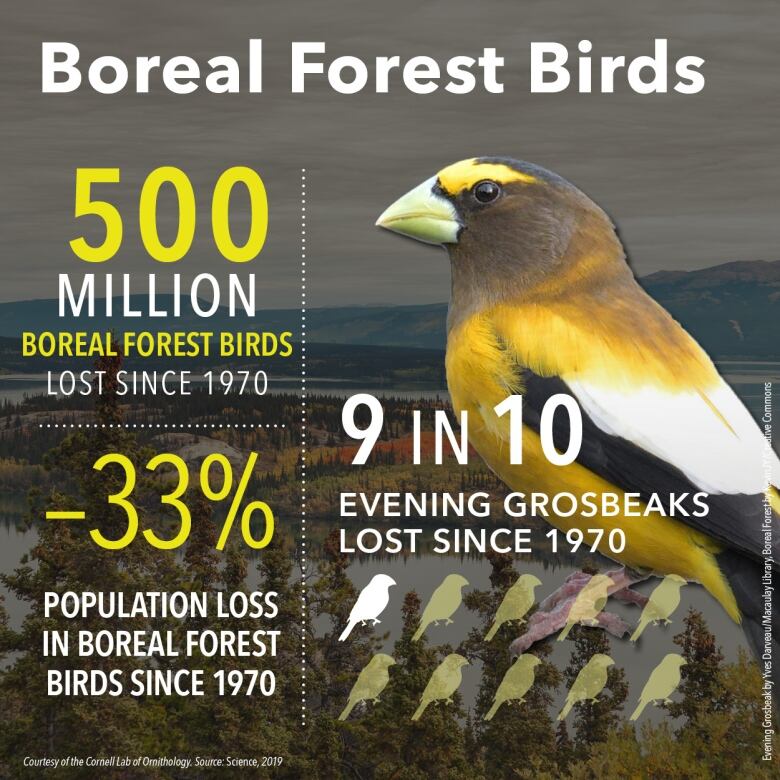'Gut punch' of crashing bird populations no surprise for retired Yellowknife biologist
Bob Bromley says northern Indigenous elders have noticed a decline in bird song for years

There has been a dramatic decline of birds across North America since 1970.More than a quarter of all birds across the continent havedied off, according to a study published recently in Science magazine.
The largest loss is 2.5 billion migratory birds, the vast majority of which are songbirds.
Many of these species travel to the North to nest and raise their young.
Half of the birds of the Boreal forest have been lost.
These dramatic figures may have caught the eye of many internationally since the paper was published last month, but the loss of songbirds in northern forests has been noticed for quite a few years.

Bob Bromley is a retired wildlife biologist in Yellowknife who has spent a lot of time observing birds in nature with northern Indigenous colleagues.
"I used to know a lot of elders that were complaining about the loss of bird voices," he said. "They're very abundant here for a short period of time, and we play a very important role hosting them during their nesting cycle."
With its vast tracts of relatively undeveloped land, Northern Canada bears a heavy burden of responsibility for preserving habitat, including the nesting habitat of many migratory birds.
"The report was a gut punch for those of us who care about birds and nature," said Jeff Wells, vice president of Boreal Conservation with the National Audubon Society.
"Protecting very large intact landscapes is one of the things that alleviates the most number of problems."
The report was a gut punch for those of us who care about birds and nature.- Jeff Wells, vice president of Boreal Conservation, National Audubon Society
But that doesn't mean turning the whole North into a national park, he says. What it means is making smart decisions on where to protect habitatand where to allow industrial development.
"It's not really fair to say that the idea is to protect the entire North," he said. "It's to be balanced about it. But first and foremost, to give the Indigenous peoples the opportunity to choose the future that they want for their lands."

Preserving large areas like the Thaidene NeneNational Park Reserve to the east of Great Slave Lake and the Tsa Tue Biosphere Reserve around Great Bear Lake can slow the loss of birds that live in or migrate through Northern forests, Wells said.
He has worked with Indigenous partners on both those projects and works with many northern and Indigenous groups on Boreal conservation.
'Canary in the coal mine'

Preserving nesting grounds is a single step to address a systemic problem.
Bromley likened the recorded bird die off tothe "canary in the coal mine" heralding the declining state of ecosystems everywhere.
"First and foremost they're an indicator species," Bromley said about birds.
"They tell us there's something happening with our environment that's significant and that's widespread and that we should be aware of it because it will have consequences for us as people."












_(720p).jpg)


 OFFICIAL HD MUSIC VIDEO.jpg)
.jpg)



























































































